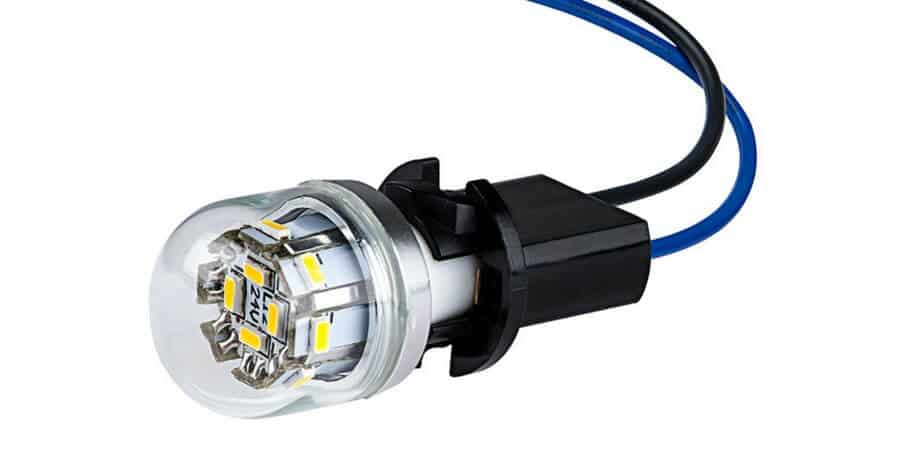LEDs may seem like new technology, but they’ve been a work in progress for over one hundred years. Many people have contributed to the scientific advancements that gradually paved the way for LEDs, taking light emitting diodes from a subtle green glow to a light bulb capable of replicating a range of colours and lumen levels, from candlelight to natural sunlight. Let’s look back at some of the events, inventors and innovators who made it possible:
| 1907 | Captain Henry Joseph Round, an English engineer, is the first to report light emission from a solid state diode. |
| 1927 | Russian scientist and inventor Oleg Losev observes the same green glow emitted by solid state diodes when connected to an electrical current. He investigates and publishes detailed theories on the subject, becoming one of the first semiconductor physicists. |
| 1939 | Hungarian physicists Zoltán Bay and György Szigeti take out a U.S. patent on a Silicon Carbide electroluminescent light source, demonstrating that visible light emitting diodes are possible. |
| 1952 | After testing some of Losev’s theories, Professor Kurt Lehovec explains the first light-emitting diodes. |
| 1955 | Rubin Braunstein, a researcher at the Radio Corporation of America, reports that Gallium Arsenide diodes are capable of emitting infrared light when electrified. |
| 1958 | Rubin Braunstein patents a Lead Antimonide and Germanium Alloy green LED with partner Egon Loebner. |
| 1962 | Nick Holonyak, a scientist at GE, develops a red LED - the first on the visible-spectrum. |
| 1964 | 1964 IBM uses LEDs for the first time on a circuit board in an early computer. |
| 1968 | 1968 Hewlett Packard starts incorporating LEDs into its calculators. |
| 1969 | After developing a way to grow Gallium Nitride (GaN) crystals, researchers Herbert Maruska & James Tietjen publish a paper outlining their method. |
| 1971 | Jacques Pankove and Edward Miller develop a Zinc (Zn)-doped GaN blue LED |
| 1972 | Electrical engineer M. George Craford invents the first yellow LED. With fellow graduate student Walden C. Rhines, Herbert Maruska successfully creates a working blue LED using Magnesium (Mg)-doped GaN, setting the standard for future bright blue LEDs. |
| 1976 | Tom Pearsall invents an extremely bright, efficient LED for optical fibre telecommunications. |
| 1986 | Physicists Isamu Akasaki and Hiroshi Amano develop high-quality Gallium Nitride for blue LEDs. |
| 1993 | With the developments and assistance of Akasaki and Amano, electrical engineer Shuji Nakamura creates the first high-brightness blue LED, which quickly leads to the development of white LEDs. |
| 2002 | White LEDs for residential use become commercially available for approximately £80 - 100 each. |
Read More
Find answers to all your questions about LEDs in the rest of our Ultimate Guide to LED Lights:
Part 1: What is an LED and How Do LEDs Work?
Part 2: Advantages of LEDs
Part 3: LEDs vs. Traditional Incandescent Lights
Part 4: Switching to LEDs in 5 Steps
Part 5: How to Buy LEDs
Part 6: History of LEDs (you’re here!)
Part 7: Advanced Features






















































































